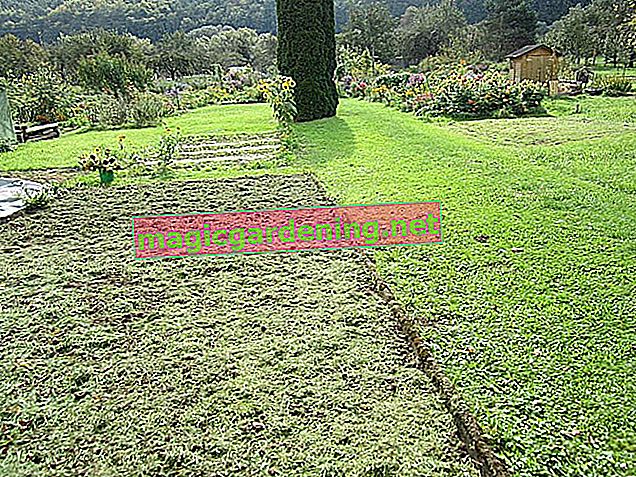
How to create a flower meadow without digging:
- Reduce maintenance measures
- Cover the surface with foil
- Apply early plants
also read
- A lawn repair without digging
- This is how you re-plant the lawn without digging
- Can you create a new bed without digging up?
Reduce maintenance measures
Reduce the mowing dates for your lawn so that a colorful flower meadow develops naturally from the green area. It is sufficient if you mow the area once or twice a year. Refrain from further maintenance measures such as fertilizing and mulching. This will slowly make the soil poor in nutrients. Over time, typical herbs and flowers that grow in the area around the garden will settle on the meadow.
If your garden is on the outskirts, a species-rich meadow is created by the flight of seeds. A garden in the city is more isolated. Here you will need more patience until the lawn has changed naturally.
Cover the surface with foil
Smaller seeded areas in the lawn act as flower islands, from which the plants automatically spread over the lawn over the years. Cover the area that you want to convert into a flower meadow with black foil. The foil is weighted down with stones. After about three to four weeks, the grass under the film will die.
Use a rake to roughen the area. Then sow the desired seeds on the area. Mix the seeds with sand or shavings to ensure that the seeds are evenly distributed over the area. Roll the soil so that the seeds come into contact with the substrate and are not covered by the earth. The seeds need light to germinate.
When sowing seeds in May, you need to take care of adequate watering. Keep the area evenly moist for the next two to three weeks. With an autumn sowing in September or with an early sowing in March, the precipitation in connection with lower temperatures is sufficient to guarantee an optimal water balance. In the summer months, a shading fleece can help on smaller areas. It prevents excessive water evaporation.
Apply mature plants
Select at least 15 different species that grow in flower meadows. The seeds are pre-grown in a pot before being planted in the lawn. Plant the mature flower meadow species in small groups consisting of three to five identical plant species. Spread the groups across the entire lawn. The preferred plants have a growth advantage over the competitive grasses so that they can assert themselves outdoors.
Special wild herb mats already contain seeds of meadow flowers or pre-grown plants. They are placed on a lawn, pressed down and moistened. The fleece prevents weeds from growing. The species develop blossoms and fruits in the first year, so that they spread rapidly over the area.








